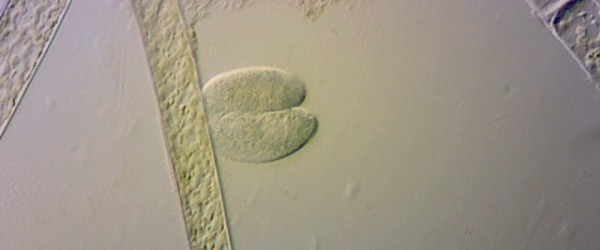
Photo courtesy of smaller.pathological.ca
If you work with yeast, then you will get a totally different meaning out of that title 🙂 However, if you spend a lot of time doing antibody-based assays then you will know what I am talking about.
Secondary antibodies can be conjugated to a variety of moieties. It can be convenient that your favorite secondary comes in a spectrum of “flavors” but sometimes all of the choices can be confusing.
Fortunately, the technique you are using usually dictates the choice of secondary, taking some guesswork out of the experiment.
Here’s a breakdown of the types of secondary antibodies you need based on the downstream application.
Chromogenic assays
If you are looking for color development on a membrane during Western blotting or on a plate for an ELISA, then you want to use an antibody that is conjugated to an enzyme like horseradish peroxidase (HRP) or alkaline phosphatase (AP). When you incubate enzyme-conjugated secondary antibodies with an appropriate substrate, the reaction will produce color.
Chemiluminescent assays
In my opinion and small lab sphere, the use of chemiluminescence for Western blots was the breakthrough of the century. HRP-conjugated secondary antibodies are reacted with substrates that produce light, enhancing the sensitivity of the assay.
Fluorescent assays
This one is kind of obvious – if you are doing immunofluorescent labeling of cells or a fluorescent or multiplexed Western, then you need to purchase an antibody that is conjugated to a fluorescent dye. The spectral range of fluorescent dyes is ever increasing, with newer antibodies extending into the near infrared region.
Building bridges
If you need to detect a target that is not well expressed, you might want to try secondary antibodies that are conjugated to biotin. You can then enhance your signal by building a “biotin-avidin-biotin-enzyme bridge”( several companies sell kits for this technique). Each avidin molecule can potentially bind to 4 biotin molecules increasing the number of molecules producing a reaction by up to 3 fold. You can then use your favorite enzyme substrate (color or chemiluminescent) for detection.
Increasing the signal
Another way to increase the signal is to use polymer-conjugated secondary antibodies. These antibodies are conjugated directly to enzymes (e.g. HRP) in a manner that increases the number of active enzymes per molecule. More enzyme means increased signal.
As you can see, it should be easy to choose the secondary antibody you need based on the technique. But what other factors should influence your choice? Stay tuned for more helpful hints on finding the perfect secondary antibody.

Leave a Reply